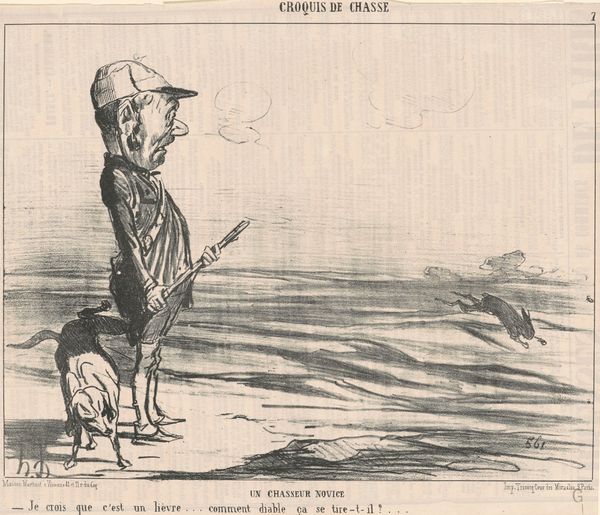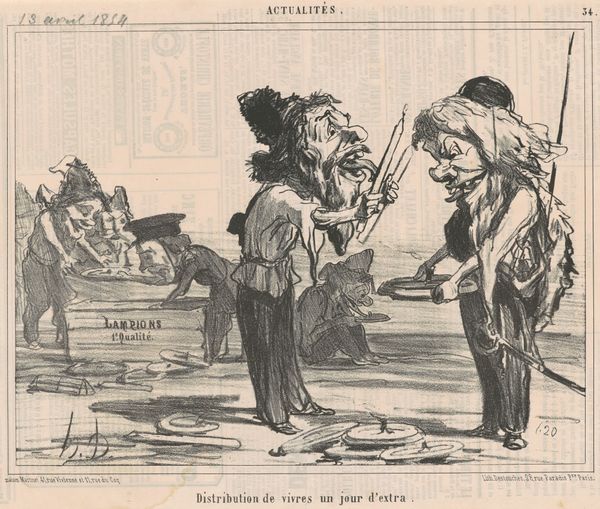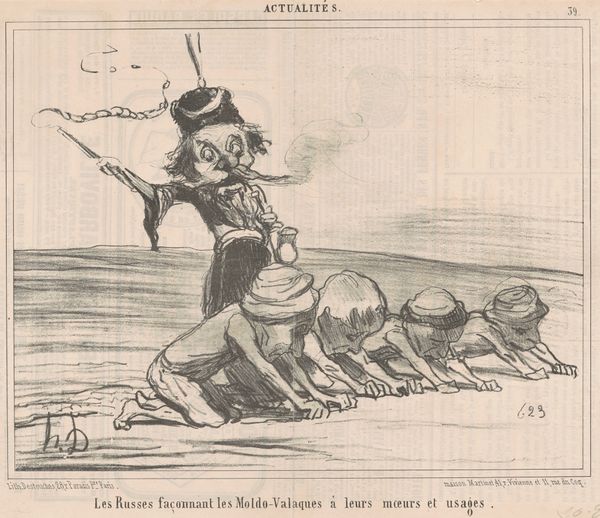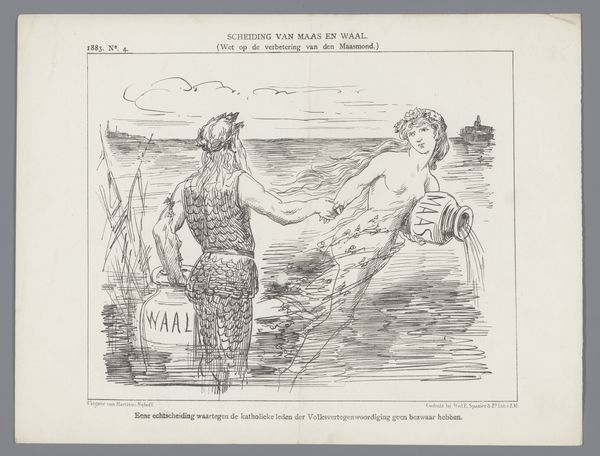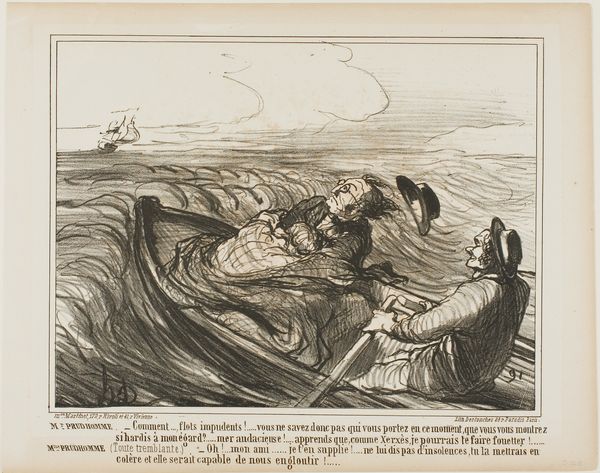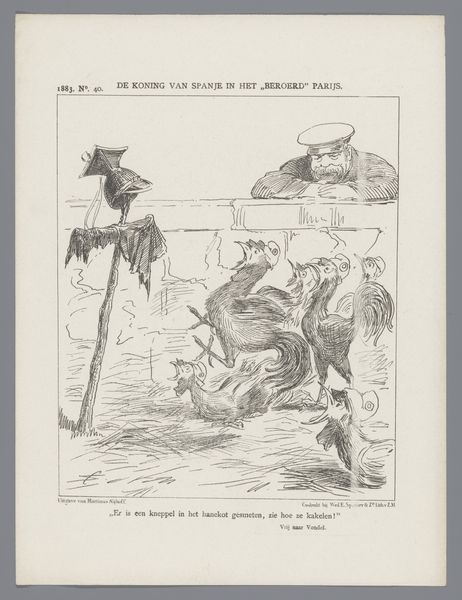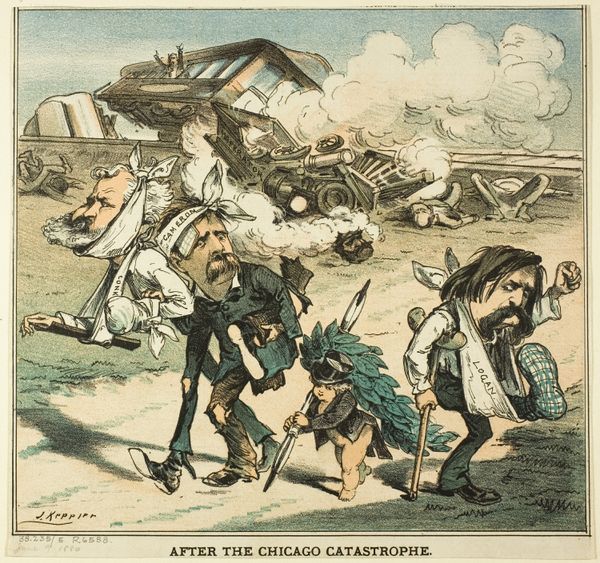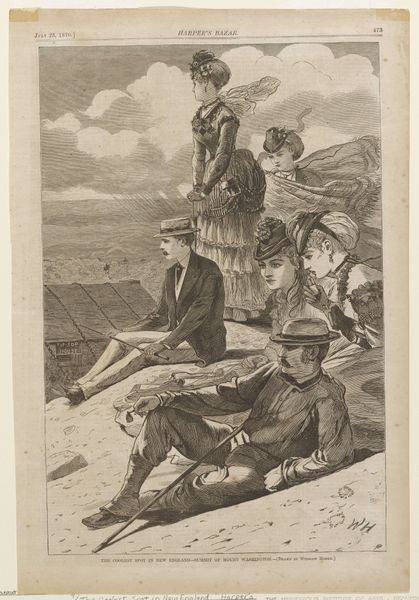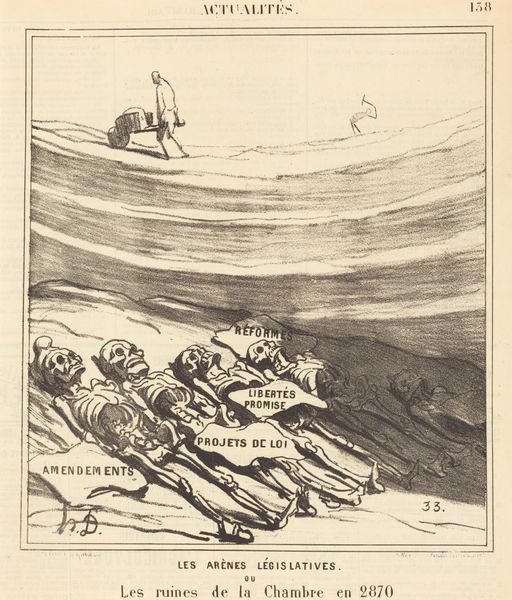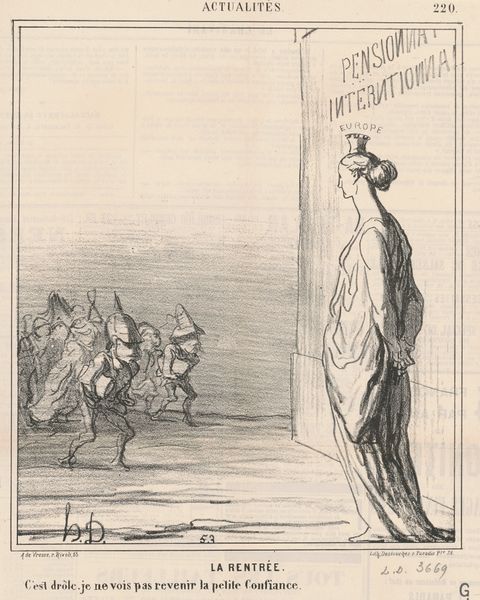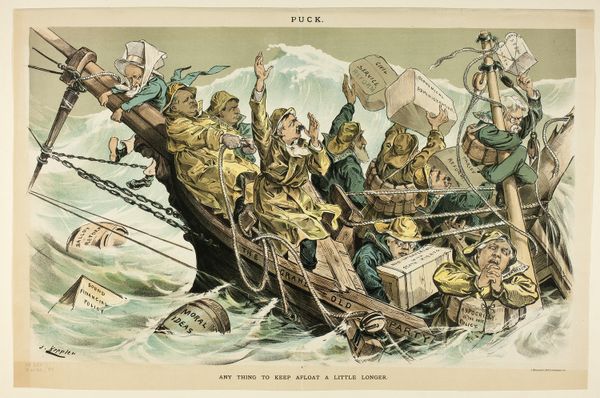
drawing, graphic-art, lithograph, print
#
drawing
#
graphic-art
#
lithograph
# print
#
impressionism
#
caricature
Dimensions: 205 × 221 mm
Copyright: Public Domain
Editor: So, this lithograph, "The Last Bather, from Puck," created in 1880 by Joseph Keppler, depicts a rather dismal scene. It gives off a strong feeling of decay and the end of something carefree. The bather himself is quite a caricature, dripping in...something unpleasant. What do you see in this piece? Curator: Well, first, consider the title: “The Last Bather.” The bather is almost drowning, as the animals eat garbage, so he seems less of a person than another element in a stew of consumption and decay. Note the color scheme – sickly yellows and browns and greens - they contribute to a sense of corruption and being far from well. In the 19th century, political cartoons like this one became vital. Could this represent an epoch, perhaps a shift from naive idealism to cynicism? Editor: That’s interesting! I was focusing on the grossness, but I didn’t immediately connect it to a larger social critique. The ship in the background seems to carry toxic waste. Curator: Indeed. Symbols like this serve to encapsulate collective anxieties. By exaggerating and distorting, the artist taps into a deeper, perhaps subconscious, unease regarding environmental and social health. Ask yourself, what’s lost here beyond just the bathing season? And what do we risk losing in the present? Editor: It’s definitely made me think about the weight of imagery in expressing cultural anxieties in a different light. It's more than just a funny picture. Thanks for your time! Curator: My pleasure. It’s in unearthing these embedded meanings that the true value of the work is revealed.
Comments
No comments
Be the first to comment and join the conversation on the ultimate creative platform.
